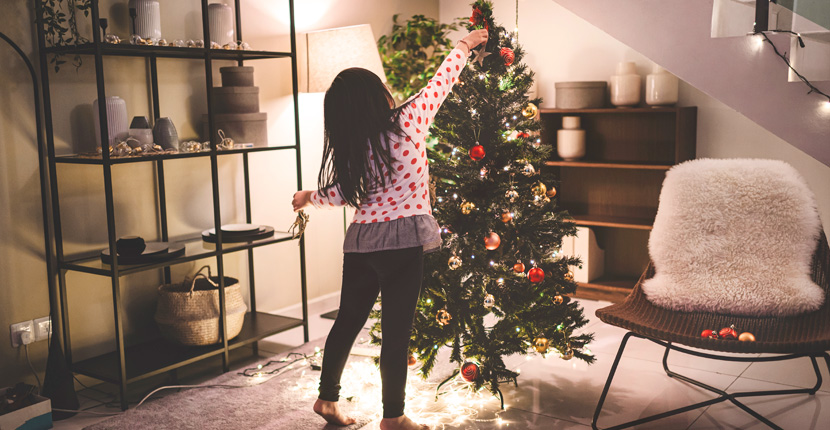Hallmark movies lie to you: Holiday magic doesn’t simply appear out of nowhere. You have to create it yourself.
And of course, creating magical moments with twinkling lights, a fresh (or fake) pine, and the sweet scent of freshly baked cookies sometimes takes real, messy effort. Think wrestling with tree stands, untangling cords, and arguing with your partner or roommate over how to hang the ornaments. But decorating doesn’t need to be difficult. We’ve pulled together some suggestions to make setting up for the holidays (and pulling it all down a few weeks later) an easier, more festive experience for everyone involved.
Setting up
Splurge for a good tree stand
Getting your tree perfectly straight in a run-of-the-mill tree stand can be a hassle—especially since the task is not something a person can usually do without help. After testing dozens of tree stands over the past decade, we’ve kept coming back to the Krinner Tree Genie XXL. Not only is the Krinner the most secure tree stand we’ve tested, but it’s also the only stand we found that one person can set up. Unlike traditional stands, the Krinner employs a foot pedal to lock the tree in—you simply set the tree in the stand and press several times on the pedal to tighten the tree trunk into place.
The Krinner stand also takes the work out of maintaining a live Christmas tree: Its water reservoir holds 2.5 gallons, enough that you don’t have to water every day. A tree of roughly 6 to 8 feet in height usually takes in 1.5 gallons or less per day, but for peace of mind a gauge on the tank keeps you updated on the water level in between fillings. To make the actual process of watering easier, senior staff writer Jackie Reeve suggests using a tree waterer like Santa’s Magic Water Spout (which is sold only locally in Los Angeles, though we’ve seen similar products, which we have not tested, sold nationally). The tool saves you from crawling under a bushy tree to water it and can help to prevent water from spilling everywhere.
Fluff your fake tree
Most artificial Christmas trees require a fluff to make them look their best. Fluffing can be a tedious affair that you have to do each year, no matter how you store your tree, because you have to manually separate and arrange the branches to give the tree volume and a realistic shape. Depending on the texture of the branches, you may even consider wearing gardening gloves. This process can take up to 45 minutes depending on the size of your Christmas tree, but it’s necessary if you want your tree to be awe-inspiring—so slip in a pair of earbuds and listen to some holiday music as you fluff.
Lighting and decorating
Don’t underestimate how many lights you need
To make a tree look well-lit (but not over the top), you need about 100 lights per foot: A 6-foot tree requires 600 lights, a 7-foot tree should have 700, and so on. That may sound excessive, but after test-trimming trees using varying amounts of lighting, we found that fewer lights seemed more Scrooge-y than sparkly.
The GE Energy Smart Colorite LED Warm White Miniature Lights set, our top pick, has 150 lights per strand, so you need at least four spools to fully light a 6-foot tree. During our testing, when we were standing in front of the tree with hundreds of tiny bulbs coiled around our feet, it seemed like way too many lights—but once we’d strung them up, we were surprised at how beautifully festive the tree looked as it sparkled at us.
Though lighting can get expensive (it costs around $160 to light a 6-foot tree if you stock up on several strands of our pick), the GE Energy Smart Colorite lights are durable enough to last a decade, so we believe they’re worth it. To keep them in the best shape possible, we have light storage recommendations below.
The best light-stringing method (and some easier approaches, too)
Stringing lights around the Christmas tree is a frustrating task—but there’s an easier, better way to light your tree. Most lighting experts, including Wirecutter senior staff writer Doug Mahoney, say the best way to hang lights on a tree is vertically. “You’re supposed to string from the bottom of the tree to the top and go in and out as you go up,” Doug says, “and then bring the strand of lights down again, going in and out of the tree—and up again.” In our experience, this method results in more even lighting and more depth of twinkle than if you were to wind the string of bulbs around the tree.

